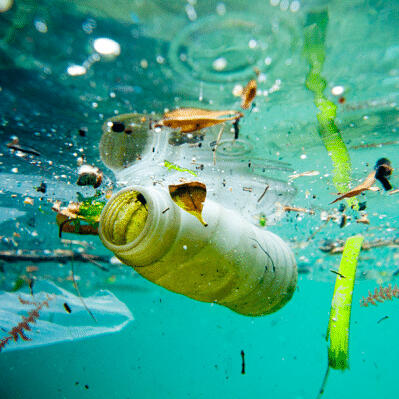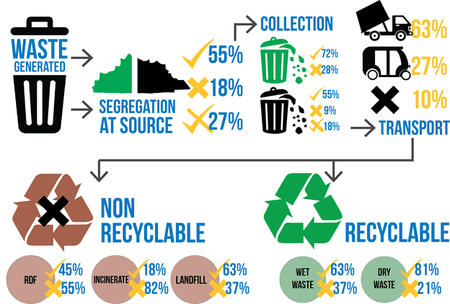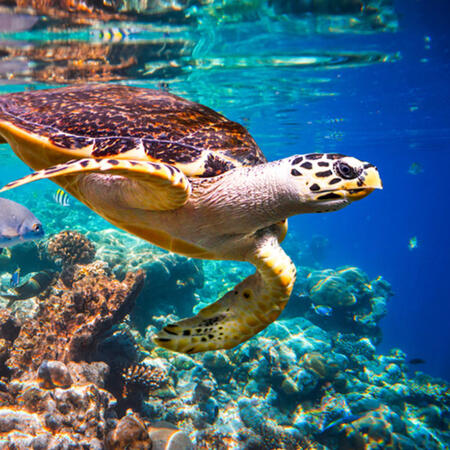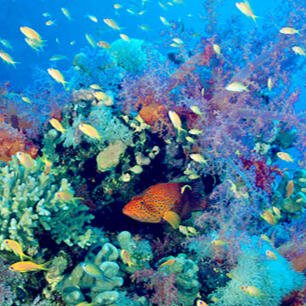GLOBAL ENVIRONMENT ISSUES
what's going on in the world and how to help

Air pollution happens when there is a release of pollutants into the air. These pollutants may cause detrimental effects to both individuals and the environment.
Air pollution is usually caused by energy use and production of various products.

1. The burning of various fossil fuels such as petroleum can cause air pollution where harmful chemicals and gases are released into the environment. Usually these fossil fuels are used in production factories, waste incinerators, and power plants. In addition, products or equipment that need high electricity consumption can also lead to more burning of these fossil fuels.
2. Aside from this, landfills can also cause air pollution because they emit methane gas which is a type of greenhouse gas. These landfills are also highly flammable and highly dangerous.
3. The cutting down of trees can also cause air pollution. As more cities become urbanized and most areas are being developed into commercial areas, more trees are also cut down. These trees help in reducing greenhouse gas emissions and if more trees are being cut down, then more greenhouse gases will be released.

Smog and Snoot
These are the two most common types of air pollution and both of these can have damaging effects to the health of individuals. Smog is a type of air pollution caused by a combination of smoke and fog, while soot is composed of tiny particles of chemicals, smoke, soil, dust and allergens. These types of pollution are mainly caused by the burning of fossil fuels. In particular, soot can become dangerous because once the tiny particles are inhaled they may cause lung problems such as bronchitis and in some cases, may even lead to heart attacks. Smog on the other hand can irritate the eyes and throat and may damage an individual’s lungs.
Hazardous Air Pollutants
Due to air pollution,many people may also be exposed to harmful chemicals such as mercury and lead. These hazardous air pollutants are released into the air mainly due to the burning of coal and gas. Similar to smog and snoot, these air pollutants can cause eye, throat, and lung irritation. Aside from this, these pollutants in particular mercury can lead to damage to an individual’s central nervous system. In addition, lead was also found to damage children’s brains and kidneys in large amounts and even in smaller amounts, lead can negatively affect a child’s IQ.
Greenhouse gases
Another effect of air pollution is the presence of more greenhouse gases which causes global warming. These greenhouse gases like carbon dioxide and hydrofluorocarbons (HFC) essentially trap heat in the earth’s surface which can cause global temperatures to rise and greenhouse gases may also lead to climate change. Due to these greenhouse gases, there has been an increase in sea levels, more heat-related deaths, more extreme weather conditions.

More bills and laws regarding the promotion of using more sustainable sources of energy should be passed
More sanctions, taxes, and regulations should be imposed by the government to make firms or companies financially responsible for the negative side effects they cause to the environment. In addition, since there are more regulations, this forces companies to think up solutions that will not negatively affect the environment.
Government should provide incentives for those who opt to use public transportation, instead of purchasing cars and for people who buy electric cars.

Water pollution happens when chemicals and harmful substances contaminate bodies of water. This includes both sea and fresh water.

Water is an easy solvent. It gets contaminated easily and is therefore also easily polluted. Toxic waste from factories, cities, and natural causes can easily dissolve into the water rending it all toxic.
There are several ways water can be contaminated:
1. Agricultural
The agricultural sector is the biggest consumer of freshwater. An estimate of 70% of surface water supplies are used up. Whenever it rains fertilizers, animal waste, pesticides all spread and make it to waterways. Another common issue is when nutrients used for plants such as nitrogen and phosphorus gather in excess and contaminate water, as this can be harmful to people and wild life.
2. Sewage and waste water.
This is made up of water from sinks, showers, toilets and other commercial and industrial uses of water.
3. Oil Pollution
4. Radioactive substances
These can be categorized further into point and nonpoint sources. Point means that the causes can be traced back such as : factories, wastewater treatment facilities, septic systems and other sources. Non-point is more difficult to identify and trace back to a specific location such as: chemical infiltration, sediments, etc.

On humans
Water is a necessity, we need it to keep our bodies functioning properly. Contaminated water can lead to diseases such as cholera, giardia, and typhoid.
On the Environment
Ecosystems need water too. Plants and the wild life need water to live too and pollution can destroy the ecosystems order.

Conserve water; the less water you use, the less will be running down the drains and into gutters, carrying pollutants with it. For more information about water consumption, as well as some tips on how to conserve water
Keep pet litter and debris out of street gutters.
Use pesticides sparingly; in general, people tend to use 10 to 50 times more fertilizer on their lawns and gardens than is necessary for good plant health.
Or, use compost to fertilize your garden.
Keep your vehicles running properly. If you have an oil leak, fix it immediately, and if you change your own oil, dispose of the used oil properly.
Use natural cleaners, such as baking soda, vinegar and borax.
Use detergents with less phosphate; sewage plants can only remove about 30 percent of the phosphates from waste. It is estimated that, in the United States, between 90.7 million and 226.8 million kilograms of phosphates are added into waterways each year.

Waste is a big contributor to global warming. Many of the resources that we use or consume are under utilized and are too prematurely sent to become waste. Waste Management offers solutions to lessen wastage and promote recycling and the use of more sustainable options. One of the goals of waste management is to promote the 3 Rs. To reduce, reuse, and recycle. Through these methods, waste is minimized and ensured to be used up to the end of its life-cycle.
Ways to Reduce Waste
-Avoid food wrapped in plastic
-Bring your own bag
-Buy things in bulk
-Avoid single use items/food
-Get your own reusable bottle
-Use reusable cutlery and storage containers
Ways to Reuse Waste
-Think to repair instead of replace
-Promote second-hand Marketplace
-Try to borrow first before buying
Ways to Recycle Waste
-Make a new product from waste to extend its life cycle.

People depend on biodiversity in their daily lives, in ways that are not always apparent or appreciated. Human health ultimately depends upon ecosystem products and services (such as availability of freshwater, food and fuel sources) which are requisite for good human health and productive livelihoods. Biodiversity loss can have significant direct human health impacts if ecosystem services are no longer adequate to meet social needs. Indirectly, changes in ecosystem services affect livelihoods, income, local migration and, on occasion, may even cause political conflict.

Loss of Habitat
One of the most significant causes of endangered animals is habitat loss. While habitat may be lost due to natural forces such as climate shifts, geologic changes, much of the habitat lost today is due to human activity. The construction of dams, highways, urbanization, and agriculture dramatically affect those inhabiting their native ecosystems. Even when portions of the ecosystem remain intact creating “islands,” the resulting habitat may be too small or too widely dispersed to support a species.
Environmental Pollution
Pollution in many forms has endangered many animals. Pesticides and other chemicals introduced to an ecosystem may significantly harm non targeted species. For example, DDT used to fight mosquitoes was eventually linked to declines in the reproductive rates of birds. Other forms of pollution such as thermal, light and noise pollution can each reduce survival rates of local animal populations.
Pathogens and Disease
The spread of domesticated animals has also spread the diseases associated with them to new areas of the world. In some cases, the diseases infected native populations which had little resistance to the invading pathogen. These diseases may reach epidemic levels in the native population, decimating their numbers.

Threats to biodiversity and health
Climate change
Biodiversity provides numerous ecosystem services that are crucial to human well-being at present and in the future. Climate is an integral part of ecosystem functioning and human health is impacted directly and indirectly by results of climatic conditions upon terrestrial and marine ecosystems. Marine biodiversity is affected by ocean acidification related to levels of carbon in the atmosphere. Terrestrial biodiversity is influenced by climate variability, such as extreme weather events that directly influence ecosystem health and the productivity and availability of ecosystem goods and services for human use.
Health research and traditional medicine
Traditional medicine continues to play an essential role in health care, especially in primary health care. Traditional medicines are estimated to be used by 60% of the world’s population and in some countries are extensively incorporated into the public health system. Medicinal plant use is the most common medication tool in traditional medicine and complementary medicine worldwide. Medicinal plants are supplied through collection from wild populations and cultivation. Many communities rely on natural products collected from ecosystems for medicinal and cultural purposes.

Identify locations of critical wildlife habitat for species at risk and the threats to these areas. Where possible, eliminate threats and maintain natural areas. Leave critical wildlife habitat undisturbed, especially nesting and denning sites. Promote wildlife use by setting up bird and bat houses.
Eradicate and control introduced weeds on your property. Keep vehicles on main roads to reduce the spread of weeds and disturbance to wildlife.
Monitor and assess your pets’ impact on biodiversity. Some domestic animals, especially cats, are predators of wild animals and can devastate the local population of native species. Cats have been estimated to kill tens of millions of birds each year in North America.
Leave native plants undisturbed, and landscape using native trees and vegetation. Native plants are well adapted to local conditions and provide a low maintenance, drought resistant garden and can prevent local flooding. Attract “good” insects by planting pollen and nectar plants.
Maintain wetlands by conserving water and reducing irrigation. Avoid draining water bodies on your property.
Construct fences to protect riparian areas and other sensitive habitats from trampling and other disturbances.
Manage livestock grazing to maintain good quality range conditions. Leave some areas ungrazed to determine range characteristics to manage for.